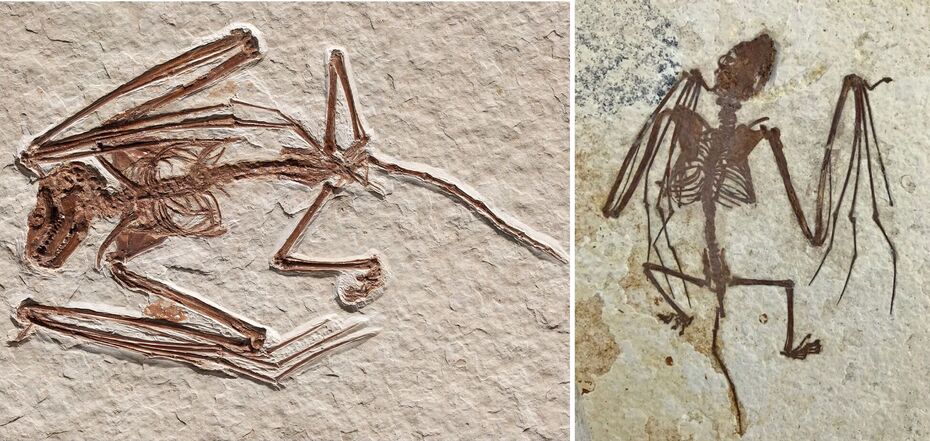Life
Skeleton of a previously unknown species of winged creature, 52 million years old, has been found. Photo.
In the US state of Wyoming, scientists have discovered two 52 million-year-old skeletons belonging to a previously unknown species of bat called Icaronycteris gunnelli. These oldest ever found skeletons of flying creatures will help scientists understand their evolution and are likely to bring them closer to discovering the ancestor of bats.
The rare fossils found in the Green River Formation are described in a study published in the journal PLOS One. The discovery of the new species has led scientists to rewrite the classification of early bats.
Bats first appeared in the Eocene era (56-36 million years ago). Before that, the oldest bat skeleton found was the fossil remains of I. index over 50 million years old and another primitive species called Onychonycteris finneyi.
Although bats number more than 1,400 species, making them the second most diverse group of mammals after rodents, people still know surprisingly little about them.
Scientists suggest that the newly discovered species was slightly smaller than the closest known related bat species, Icaronycteris index, and could easily fit in the palm of a human hand with its wings folded.
"When I first saw the first skeleton, I immediately thought it was different from the others," said Tim Rietbergen, lead author of the study and a palaeontologist at the Naturalis Biodiversity Centre in Leiden, the Netherlands, LiveScience reports.
Bat ecologist Nancy Simmons, who found the previous oldest bat skeleton, said it was a great success to find a whole fossilised creature.
"It's always exciting to see a complete set, not just pieces," she told Simmons.
In an interview with Inverse, Simmons explained that usually fossils of bats and most other animals fall into the hands of scientists in fragments.
"A few teeth here, a jaw there, a limb bone there," the scientist complained.
After the skeletons were found, the scientists compared them with intact skeletons of six Eocene bat species, with teeth from two other extinct species, and with skeletons of modern bats.
This allowed them to confirm Rietbergen's hunch that the skeletons belonged to a previously unknown species of Icaronycteris, which they named I. gunnelli in honour of the late biologist Greg Gunnell, who studied bats.
Rietbergen added that this discovery shows that the diversity of bats in the early Eocene may be much higher than previously thought.
Detailed scanning of the fossils allows scientists to assume that the representatives of the new species weighed 22.5-28.9 grams. As for the wingspan, scientists can only guess, as the bones in the wings could have been deformed during fossilisation.
Study co-author Matthew Jones from the University of Arizona (USA) explained that although this is the oldest known bat skeleton, it is not the oldest bat in the world. According to him, fragments of bat teeth and jaws that are about three million years older than the recent discovery have also been found in the Green River Formation.
Jones also said that the fossils found have more "primitive" characteristics compared to their modern counterparts. For example, their arm bones vary in length much more than those of modern bats. Modern bats have a more optimal ratio of arm and shoulder bones for flight.
Analysis of the find also suggests that Green River bats evolved independently of other Eocene bats.
Rietbergen notes that the skeletons show how little humanity knows about bats.
"Once we have a good idea of the diversity of bats, we will be able to study their evolutionary adaptations and possibly find clues that will bring us closer to discovering the ancestor of bats," the paleontologist said.
Earlier, OBOZREVATEL reported that the remains of giant ants that hunted lizards were found in different parts of the world.
Subscribe to OBOZREVATEL's Telegram and Viber channels to keep up with the latest news.



























